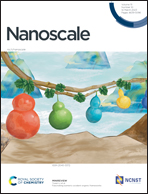Shape programmable T1–T2 dual-mode MRI nanoprobes for cancer theranostics
Abstract
The shape effect is an important parameter in the design of novel nanomaterials. Engineering the shape of nanomaterials is an effective strategy for optimizing their bioactive performance. Nanomaterials with a unique shape are beneficial to blood circulation, tumor targeting, cell uptake, and even improved magnetism properties. Therefore, magnetic resonance imaging (MRI) nanoprobes with different shapes have been extensively focused on in recent years. Different from other multimodal imaging techniques, dual-mode MRI can provide imaging simultaneously by a single instrument, which can avoid differences in penetration depth, and the spatial and temporal resolution of multiple imaging devices, and ensure the accurate matching of spatial and temporal imaging parameters for the precise diagnosis of early tumors. This review summarizes the latest developments of nanomaterials with various shapes for T1–T2 dual-mode MRI, and highlights the mechanism of how shape intelligently affects nanomaterials’ longitudinal or transverse relaxation, namely sphere, hollow, core–shell, cube, cluster, flower, dumbbell, rod, sheet, and bipyramid shapes. In addition, the combination of T1–T2 dual-mode MRI nanoprobes and advanced therapeutic strategies, as well as possible challenges from basic research to clinical transformation, are also systematically discussed. Therefore, this review will help others quickly understand the basic information on dual-mode MRI nanoprobes and gather thought-provoking ideas to advance the subfield of cancer nanomedicine.

- This article is part of the themed collection: Recent Review Articles


 Please wait while we load your content...
Please wait while we load your content...